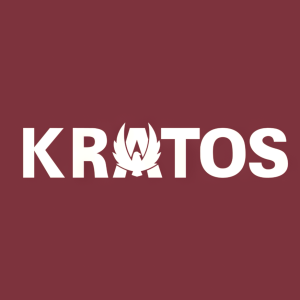Kratos Breaks Gigabit Barrier with OpenSpace™ Virtualized Wideband Receivers for Earth Observation Missions
Kratos Defense (Nasdaq: KTOS) has exceeded a gigabit throughput with its OpenSpace™ virtualized wideband receivers, achieving over 1.2 Gbps performance on standard x86 computers. This innovation significantly reduces downlink costs while enhancing performance for Earth Observation and Remote Sensing missions. The software receivers, OpenSpace ORX and quantumRX, eliminate the need for expensive hardware, leading to faster deployments and optimized resource use. This achievement confirms the capability of software solutions to handle the increasing data demands of satellite operations.
- Achieved over 1.2 Gbps performance using standard x86-based computers.
- Reduced costs for downlink operations in EO and RS missions.
- Enhanced deployment times and scalability with virtualized solutions.
- Eliminated need for expensive hardware, improving resource utilization.
- None.
Delivering Greater than 1 Gbps of DVB-S2 Downlink Processing Using Only x86 based General-Purpose Computers
SAN DIEGO, Oct. 19, 2021 (GLOBE NEWSWIRE) -- Kratos Defense & Security Solutions, Inc. (Nasdaq: KTOS), a leading National Security Solutions provider, announced today that it has broken the gigabit throughput barrier with its OpenSpace™ virtualized wideband receivers delivering over a gigabit per second performance running solely on commercially available, off-the-shelf x86-based computers. This achievement drastically lowers the cost of downlinks, while raising performance for Earth Observation (EO) and Remote Sensing (RS) missions.
More and more high bandwidth EO and RS data is being beamed from satellites and the infrastructure on the ground must keep up. This is particularly driven by the challenge of EO/RS applications that rapidly download data on the fly during the short time periods when satellites are over the ground system, as well as the need to process the data as fast as possible.
Kratos breaking the gigabit milestone demonstrates that the high throughput required by EO/RS satellites can be achieved by software receivers running on x86-based general purpose computers that do not require specialized hardware such as Field Programmable Gate Array (FPGAs) or Graphics Processing Units (GPU). This level of performance demonstrates that operations can be streamlined by leveraging virtualized solutions or deploying in the cloud without the need for expensive hardware acceleration. It also showcases the performance of Kratos’ OpenSpace software receivers, which are taking advantage of the standard DVB-S2 waveform to make much more efficient use of the spectrum.
The software receiver speeds were achieved by two different virtual receivers that are part of the OpenSpace family: OpenSpace ORX and OpenSpace quantumRX. OpenSpace ORX is deployed as an integrated part of the OpenSpace Platform for highly dynamic operations to provide fully orchestrated and automated end-to-end EO and RS mission downlinks. OpenSpace quantumRX provides greater agility at the device level by replacing traditional hardware with individual virtualized products. Compared to today’s traditional hardware infrastructure, these software receivers offer much faster deployment times, smaller physical footprints, highly optimized resource utilization, and scalability on demand.
“It’s been difficult for many in the industry to envision a virtualized software receiver handling the growing level of performance needed by Earth Observation missions using only off-the-shelf x86-based computers,” said Christopher Boyd, Senior Director of Product Management from Kratos. “With OpenSpace quantumRX and OpenSpace ORX we have enhanced our support for the DVB-S2 waveform and performance in software, achieving greater than 1.2 Gbps throughput at 32 APSK on a 270 Symbol per second RF carrier running on x86-based generic compute.”
OpenSpace is a family of solutions that enable the digital transformation of satellite ground systems to become a more dynamic and powerful part of the space network. The OpenSpace family includes OpenSpace SpectralNet® for digital IF, OpenSpace quantum™ for individual virtualized products, and the OpenSpace Platform for fully dynamic, service-oriented, and orchestrated satellite operations.
About Kratos Defense & Security Solutions
Kratos Defense & Security Solutions, Inc. (NASDAQ:KTOS) develops and fields transformative, affordable technology, platforms and systems for United States National Security related customers, allies and commercial enterprises. Kratos is changing the way breakthrough technology for these industries are rapidly brought to market through proven commercial and venture capital backed approaches, including proactive research and streamlined development processes. At Kratos, affordability is a technology and we specialize in unmanned systems, satellite communications, cyber security/warfare, microwave electronics, missile defense, hypersonic systems, training, combat systems and next generation turbo jet and turbo fan engine development. For more information go to www.KratosDefense.com.
Notice Regarding Forward-Looking Statements
Certain statements in this press release may constitute "forward-looking statements" within the meaning of the Private Securities Litigation Reform Act of 1995. These forward-looking statements are made on the basis of the current beliefs, expectations and assumptions of the management of Kratos and are subject to significant risks and uncertainty. Investors are cautioned not to place undue reliance on any such forward-looking statements. All such forward-looking statements speak only as of the date they are made, and Kratos undertakes no obligation to update or revise these statements, whether as a result of new information, future events or otherwise. Although Kratos believes that the expectations reflected in these forward-looking statements are reasonable, these statements involve many risks and uncertainties that may cause actual results to differ materially from what may be expressed or implied in these forward-looking statements. For a further discussion of risks and uncertainties that could cause actual results to differ from those expressed in these forward-looking statements, as well as risks relating to the business of Kratos in general, see the risk disclosures in the Annual Report on Form 10-K of Kratos for the year ended December 27, 2020, and in subsequent reports on Forms 10-Q and 8-K and other filings made with the SEC by Kratos.
Press Contact:
Yolanda White
858-812-7302 Direct
Investor Information:
877-934-4687
investor@kratosdefense.com

FAQ
What performance milestone did Kratos Defense achieve with KTOS?
How does Kratos Defense's technology impact Earth Observation missions?
What systems are part of Kratos Defense's OpenSpace family?







